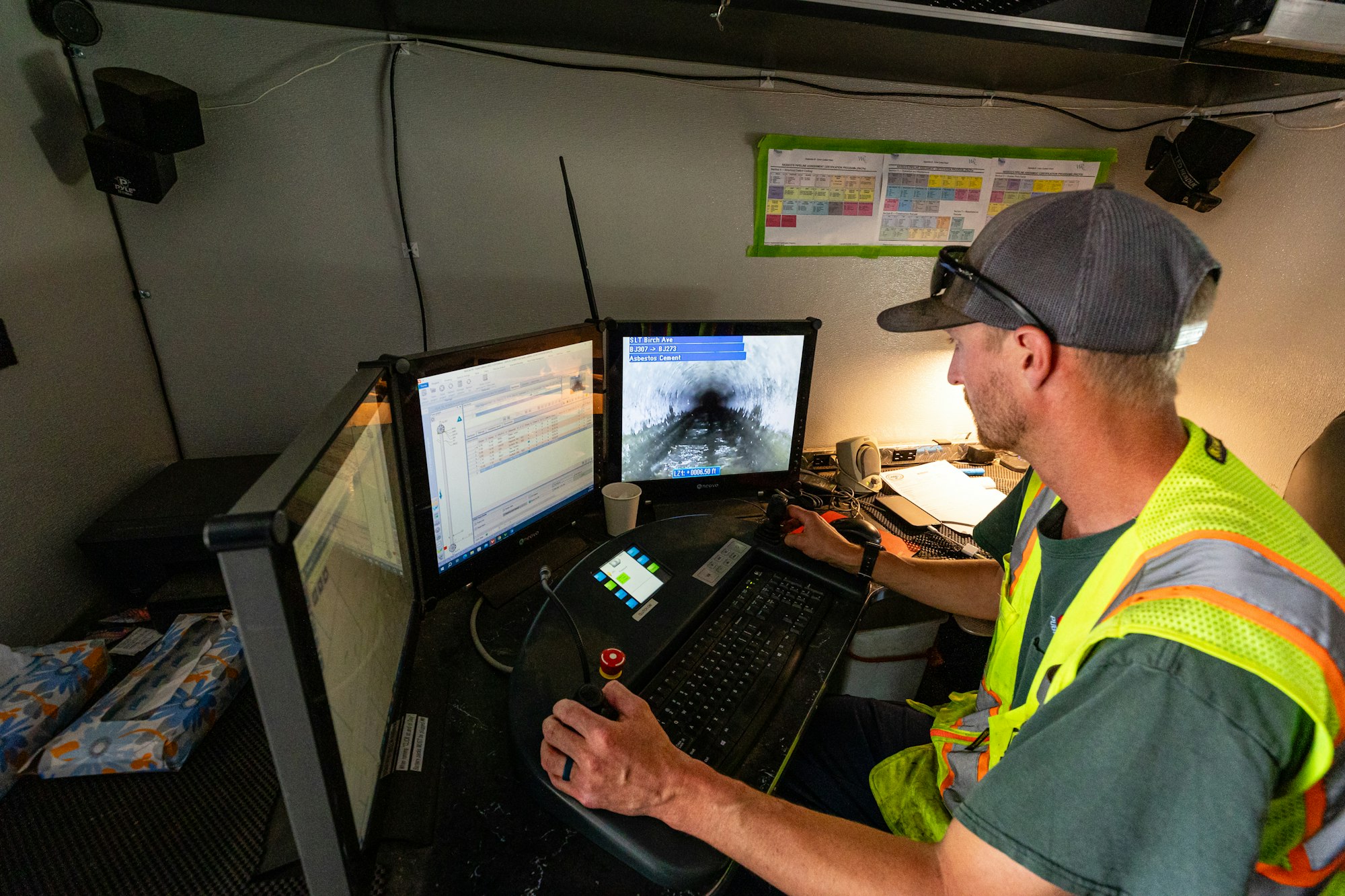Grease Facts

The most common cause of sewer line failure for food service establishments is grease. Clogging of sewer pipes and drain lines are common consequences of oil and grease in wastewater. The best way to avoid this problem is to prevent oil and grease from getting into the sewage system in the first place! This must be done by separating the gray water (kitchen wastewater) from black water (restroom wastewater), and installing a grease interceptor or grease trap to process the gray water and capture the grease.
What is a Grease Interceptor?
A grease interceptor looks very much like a septic tank. Multi-compartment sinks, pot sinks, dishwashers, and similar fixtures discharge their wastewater through a separate plumbing stub out into a grease interceptor. Grease interceptors are typically sized from 320-gallon to 10,000-gallon capacity. Upon entering the interceptor the wastewater flow slows, which allows the lighter grease to separate from the wastewater and float to the top of the interceptor where it cools. The grease will tend to collect and float in the interceptor.
Over a period of time, the grease will build up to a point where it needs to be removed. If not removed, the grease will work itself into the sewer system. Once grease enters the drain lines, it will clog and cause failure of the system.
What is a Grease Trap?
A grease trap is a small box ranging in size from 40-pound to 100-pound capacity. Traps have flow control valves to limit the rate of discharge to the trap. Traps are limited to handle discharge from a maximum of four fixtures, not to exceed 50 gallons per minute combined discharge rate. Dishwashers, sanitizers and garbage disposals/grinders can not drain to traps.
How is Grease Managed?
The grease removal device should be checked daily or weekly depending on the business and the grease thickness measured. This can be done with a simple measuring rod. If the grease layer is half the thickness of the entire trap/interceptor, the grease must be removed by an approved method.
South Tahoe Public Utility District recommends that properties with grease traps/interceptors enter into a maintenance contract with a licensed pumper/hauler. The contract should specify that the hauler will make periodic inspections of grease accumulation and that the trap/interceptor will be pumped at whatever intervals are necessary to ensure that the level of grease does not exceed half the thickness of the trap/interceptor.
Regular maintenance, consisting of routinely checking the grease level and periodically pumping the tank, is essential. Due to the threat of stoppages, spills and environmental degradation, it is a District code violation to operate a food service establishment which has a malfunctioning or full grease trap/interceptor. District Inspectors actively enforce this important code provision. Therefore, grease trap/interceptor maintenance becomes a very important aspect of food service management.
Excess food or grease from meal preparation should never be dumped into a sink, grease trap/interceptor, or any other part of the plumbing system. An environmentally sound method of managing this grease is to have it picked up by a rendering company to be recycled.
